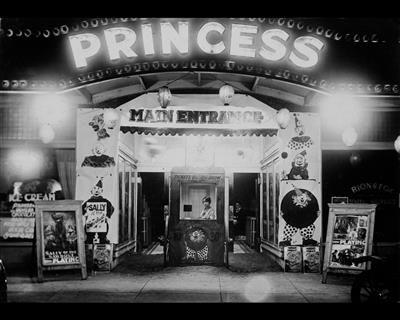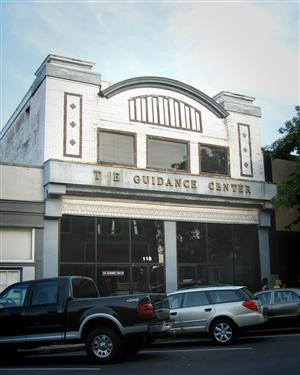
Exploring the ordinary aspects of the life and culture of Murfreesboro will give us clues to how music evolved from the early 20th century to the present. With both the articulate and inarticulate as we travel down an unfamiliar road, we will discover how music was experienced here. There are diaries, letters, historical resources that educate. However, we must go to unaccustomed sources in order to reconstruct their daily experiences, their values, their anxieties and exasperations. Music has played a most vibrant role in expressing emotions throughout human history. No doubt, these emotions that reflected the ethos of the general public ultimately played a role in our community’s musical history.
Described as conservative in opinion yet an unswerving Democrat in its politics, the Free Press, a newspaper founded by G.T. and Reece Henderson, was neat in appearance: it was clean and dignified, reflecting the attitude and disposition of a community trying to recover from the ravages of the Civil War. By 1890, Murfreesboro had outgrown its reputation as described by a reporter after Lee’s surrender: “the burnt scorched desert midway between Memphis and Bristol.” In a promotional pamphlet dated May 17, 1889, W.D. Fox termed the city “one of the most precious jewels in the south.”
The “Town Topics” of the 1889 paper (evolving later into what we know as the Daily News Journal) stated, “Murfreesboro is a thriving young town.” Indeed, Murfreesboro was recovering economically, even able to boast that it was “The Home of Cedar, Being the Greatest Cedar Shipping Point in the World.” The tone of the paper reflects the interests of a changing population interspersed with advertisements, jokes, tidbits of gossip, American classic references and scientific observations. Stories of dances, strolling parties and so forth occur throughout the community, which resulted in a need for the Murfreesboro Dancing Academy, conducted by Professor Pierri. According to Pierri’s advertisement, his academy offered instruction in “fashionable dancing and deportment” in two sessions daily, one for misses and boys in the afternoon and the other for ladies and gentlemen in the evening. Once more, music thrived, and Murfreesboro, like most of America, felt like singing and dancing again!
At the end of the “gay nineties,” the census of 1900 found Murfreesboro with a total population of 5,000 and 94 business establishments, many of them owned and operated by one person. In Rutherford County, agriculture was changing as well, becoming a viable industry. For more than 25 years after the war, farms decreased in value. The hardships in the years of the reconstruction days led many Southern farmers to diversify and fall back on their own self-sufficiency and resourcefulness. These and other factors would help our county attain its place in agriculture prior to the Civil War, one gained primarily due to the rise of the dairy industry. The first “Medal of Merit” cow east of the Mississippi was raised on a Rutherford County farm. About 1890, the first creamery was organized in Murfreesboro. The dark side of this agricultural growth was that Rutherford County ranked high in farm tenancy despite the fact that many farmers were encouraged to buy their own farms. This meant that by the 1920s most farmers were tenants. Seldom did the tenant or “sharecropper” rise above his circumstances. The conclusion was the sentiment after the Civil War which continued for many: “Murfreesboro was poverty stricken!”
November 7, 1901, was a proud moment, perhaps the proudest in years for the “precious jewel of the South.” Murfreesboro was finally commemorating the valor of those Rebels whose dust now mingled in the fields—the dedication of the Confederate Memorial. The sun was shining brightly, a slight breeze in the air as nearly 3,000 gathered, men and women, many bent with age, tears trickling down their cheeks. Solemnly, these battle-scarred veterans clothed in their tattered uniforms bowed their heads as the sweet sounds of old-time Southern melodies, sung by the Lebanon Glee Club, wafted over the crowd. Although these young women sang exuberantly, they were oblivious to the struggle and adversity during the dark days of the Civil War and the deprivation of Reconstruction. The boys of the Tennessee Industrial School band played, “Dixie” as the statue of a Confederate soldier was unveiled. Later that afternoon the old veterans tramped through the surrounding fields visiting old battlefields and reliving the valiant conflict. Nearly 40 years had passed, but the horror and destruction recalled by those Confederates present was as vivid as if it had taken place yesterday.
Like other young Americans at the turn the new century, the young were respectful toward the commemoration, but their idealistic sentiment was hopeful; they were not willing to remain stuck in the paradigms of the past.
In order to relieve the debts, Oaklands Manor, Murfreesboro’s finest home and a symbol of our community’s opulence before the Civil War, was sold at public auction. At the turn of the 20th-century days, millionaires Tempe and George Darrow acquired Oaklands and dominated the social scene in Murfreesboro for years. Renaming the house Oak Manor, the Darrows proceeded to entertain in style, serving guests elaborate seven-course meals capped by dazzling deserts like ice cream sculpted and colored to look like watermelon. Often the Darrows had elaborate parties with orchestras and dancing. Darrow also purchased one of Murfreesboro’s first automobiles around 1900, much to the terror of local livestock. Horses were mortally afraid of the car and Darrow was forced to stop completely when he met a horse-drawn vehicle.
By 1900, technology was changing the way people experienced music and entertainment. Storefronts were converted to auditoriums for small theaters were opened for motion pictures called “nickelodeons.” Nashville’s first nickelodeon was opened in 1907 by the Crescent Amusement Company and became one of the largest independent chains in the Southeast. In a converted bake shop owned by John Grey, the first theater located outside Nashville was opened here in Murfreesboro in 1914. The new Princess Theatre was designed for 620 moviegoers. It had a projection room with two projectors and a small stage to accommodate vaudeville players who would perform from time to time. The white glazed tiles and decorative façade remain visible on the upper section of the old theater at the Rutherford County Guidance Center on North Church Street.
The piano music of Scott Joplin and his ragtime music was a perfect fit for the silent movies. By 1900 in Murfreesboro, most parlors had a piano, but none had been played in the rhythmic, strongly syncopated style of Joplin. Joplin’s music changed American music forever. He is considered by musicologists to be the “great-grandfather of American music.” Without him and his uniquely American style, there would be no jazz, rock ’n’ roll or pop music. Altogether, Joplin composed 50 piano rags, even two ragtime operas. Ragtime blended perfectly with the European classical styles and the African American harmonies. He is best known for “Maple Leaf Rag” and “The Entertainer,” made famous in the 1973 Paul Newman/Robert Redford movie The Sting, which won the Oscar for Best Musical Scoring. Unknowingly, Joplin was able to set the standard that set ragtime apart and helped other young composers and performers to develop music that was truly American.

The Rutherford County Guidance Center, 2014. Home of the Princess Theatre for 10-plus years.
(Top) The Princess Theatre, circa 1915
In the early 1920s, Uncle Dave Macon, along with brothers Kirk and Sam McGee and fiddle player Mazy Todd from the Kittrell community, adopted a wide range of musical styles and integrated them into string band music. Part of the musical genius of Sam McGee was the unique way he would integrate ragtime into his solo guitar pieces.
By World War I, the primitive slave and work songs of the white tenants of the 19th century were beginning to blend into the mainstream American culture. Although there are distinctly different interpretations, original compositions with different kinds of instruments continued to express the most vibrant human emotions, bringing a fresh infusion of language, music and arts into the culture.
In ways both subtle and pervasive, entertainment was becoming a part of daily life, from formal situations such as in the theater and stages like the Princess. Carrying attitudes and ideas through their music, popular entertainers were emerging with a powerful influence over the culture, reflecting the fears and fantasies shaping and reflecting popular opinion. After 1917 when American entered World War I, much of the music reflected this and moved in emotional sentimentality, such as John McCormack’s, “Keep the Home Fires Burning.” However, in the rural communities around Murfreesboro, unstructured entertainment such as barn dances and impromptu sessions took place under trees and on porches. These continued to be an emotional release from the rigors of farm life, as most farmers worked a 12-hour day.
A question could be asked. When did entertainment become the focus of our musical expression? Could it be when we confused fun with joy? Could it be that transcending time and place in us all is the need to express ourselves through music? For as long as man has walked the earth, music has been a vital part of our culture, lifestyle and collective memory. Music is curative and restorative. Somehow we have reduced musical expression to a one-dimensional experience through a reliance upon the entertainer that limits our role to that of observer and consumer.
Music unlocks and evokes powerful emotions both positive and negative. When experienced positively, music has the ability to “heal the soul,” yet if we come from wrong mindsets, our musical expression can be perverted and even skewed. When “fun” is our objective instead of “joy,” our pleasure is in what we are doing at the moment. Fun is temporary and expensive, but joy is long-lasting and free. There is a dimension outside of ourselves that is the Source of all joy—God. Our joy comes from a relationship with Him who is the Source of all positive musical expression.
Scott Joplin’s Music:
http://www.youtube.com/watch?v=fPmruHc4S9Q
“Keep the Home Fires Burning,” written by John McCormack












